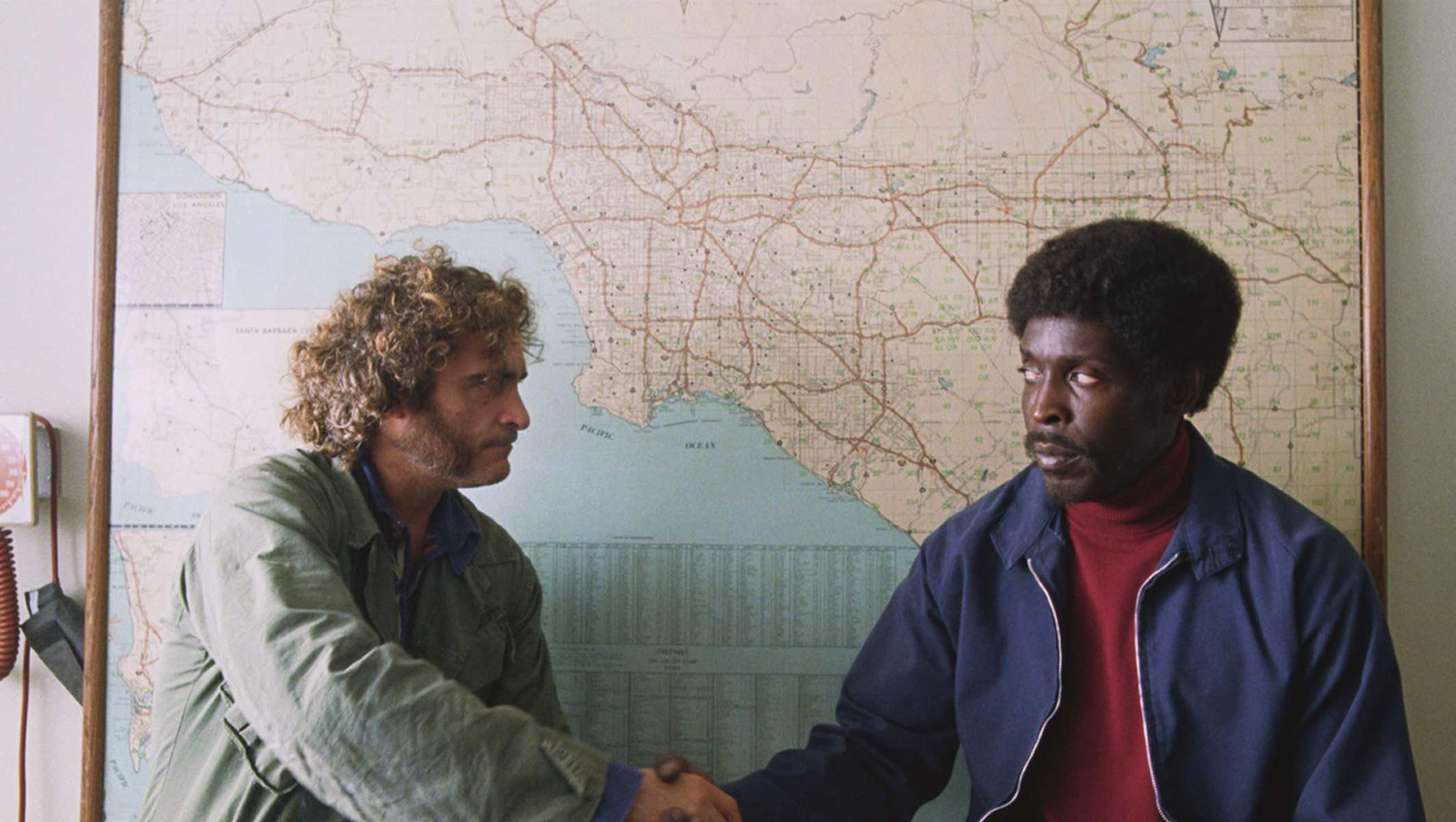Movie Review: ‘Inherent Vice’

(Warner Bros.)
By Ian Colvin
Dec. 15, 2014 2:50 a.m.
Thomas Pynchon, the notoriously reclusive writer of such postmodern classics as “The Crying of Lot 49” and “Gravity’s Rainbow,” has built a career off novels deemed too dense, idiosyncratic and cerebral to ever be translated to the screen effectively.
Yet, finally, famed American auteur Paul Thomas Anderson has done the unthinkable with his adaption of Pynchon’s 2009 novel “Inherent Vice.” Anderson’s film is both a faithful take on the original source material and an engaging, brilliant work of art in its own right.
In the fictional Southern California town of Gordita Beach in 1970, Doc Sportello (Joaquin Phoenix), a hip, pot-smoking private eye, navigates his way through the murky, paranoid underbelly of a post-Manson Los Angeles in an attempt to track down his missing ex-girlfriend, Shashta (Katherine Waterston). In the process, he comes into contact with a Nazi biker gang, a cult, corrupt police officers and a slew of other characters each more crazed, eccentric and stranger than the last.
There is so much going on, so many side stories and veering plotlines, that to understand how everything ties together seems nearly impossible. Many critics have described it as a labyrinth of sorts, and such a description is rather apt. The brilliance of “Inherent Vice,” however, lies not in its story, but in its execution and in the way Pynchon’s chaotic world is translated to the silver screen.
Anderson skillfully procures brilliant performances from his cast of actors. Phoenix, as the film’s main character, delivers a tour-de-force performance, one that is simultaneously funny, sad and deeply moving. Martin Short, too, gives the best performance of his career as Dr. Rudy Blatnoyd, a drug-addicted dentist with a penchant for younger girls.
Newcomer Katherine Waterston is particularly good in the role of Shasta, and in the film’s emotional apex – a remarkable scene shot in a single take between her and Doc where she delivers a monologue, seduces her former lover and then has sex with him – her performance is spellbinding and ethereal.
There are moments of such supreme beauty in “Inherent Vice,” individual sequences pulsating with such electricity and dynamism, that one can hardly help to not be drawn in by it all.
In the most tender and fleeting sequence of the entire picture, Doc and Shasta run through the rain, kiss under brightly burning neon as Neil Young plays in the background. This type of scene has been done probably thousands of times, the elements arranged in a similar fashion in countless other films: a torrent of rain, two lovers and a passionate kiss. Yet there is something truly interesting in the way it is handled. It is difficult not to sit up and take note of its stirring juxtaposition of sight and sound. With Robert Elswit’s camera quickly tracking back and forth along the street as it follows them and Joanna Newsom’s beautiful narration echoing nostalgia for days long-gone, the scene comes to life as a truly brilliant, dynamic and absorbing sequence that takes full advantage of both audio and visual tracks.
“Inherent Vice” is an interesting step in Anderson’s career. It is both a shift away from anything he has done previously and also the kind of film it seems he has been working towards for quite some time. It has the exuberance of his early ensemble films, 1997’s “Boogie Nights” and 1999’s “Magnolia”; the off-beat, often strange humor of 2002’s “Punch Drunk Love”; and the formalism and detachedness of his previous two films, 2007’s “There Will Be Blood” and 2012’s “The Master.”
Funny, heartbreaking, absurd and at times surreal, “Inherent Vice” is one of the few American movies of the year released by a Hollywood studio to take major risks. It is constantly challenging its audience to throw out their preconceived notion of standard narrative form and embrace its meandering, free-for-all structure. Some elements and individual scenes may work better than others, but the picture as a whole remains one of 2014’s most exciting works, a production made by a filmmaker seemingly unafraid to alienate in order to bring Pynchon’s anarchic world to the screen for the first time.


